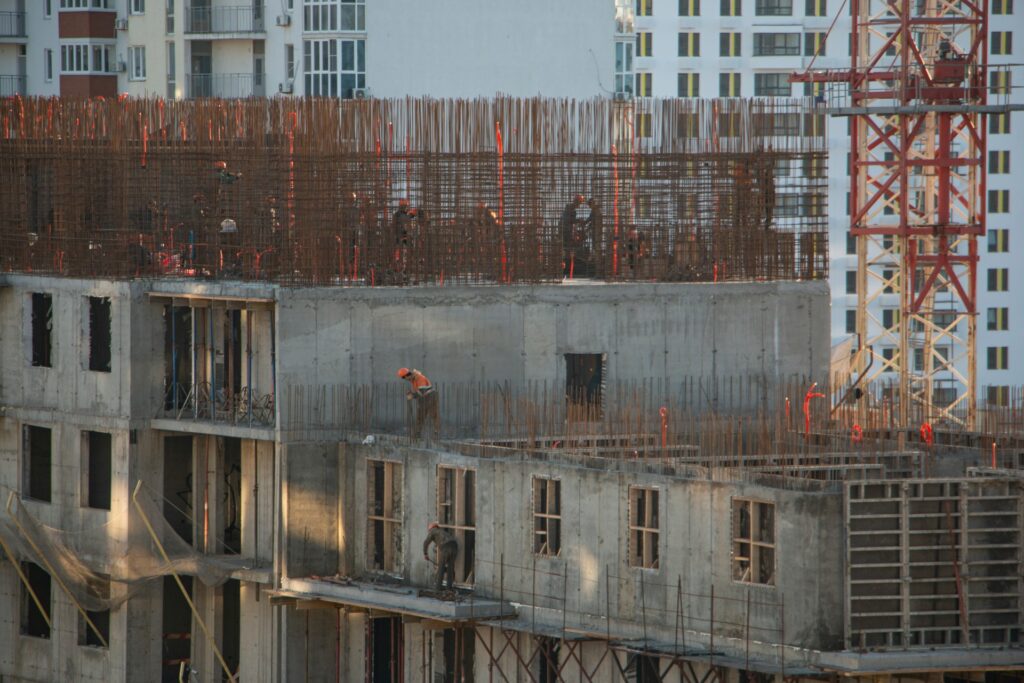The Role of Technology in Reducing Construction Costs
Advancements in technology bring revolutionary improvements to construction operations through cost-saving solutions that build both quality performance and operational effectiveness.
Combining advanced software solutions with cutting-edge machinery helps projects achieve better efficiency through waste reduction and faster project timelines.
The succeeding piece examines how technology changes the construction manufacturing by driving cost competence across its divisions.

Advanced Construction Software and Project Management Tools
Through software adoption in construction management, the project planning process and execution methods now present enhanced cost control features.
Key Benefits of Construction Software
Accurate Budgeting and Forecasting: BIM technology supports developers with detailed cost projections which minimizes expenditure overshoots.
Improved Project Scheduling: Through use of Primavera and Procure products scheduling operations become efficient so projects maintain proper progress while avoiding losses from delays.
Collaboration and Communication: Time in real-time enables cloud-based platforms to connect teams through communication thus reducing both costly errors and team miscommunications.
Dynamic process automation and immediate data access of these tools reduces project cycle costs through the elimination of unnecessary process wastes.
Automation and Robotics in Construction
Current techniques in construction use robotics and automation to reduce operating expenses while delivering tasks with greater accuracy and operational efficiency.
Examples of Automation and Robotics
Robotic Bricklayers: The automated SAM100 machine uses semi-robotic technology to lay thousands of bricks per day thus saving project costs and shortening construction schedules.
3D Printing: Large-scale 3D printers construct building components in addition to whole structures through a process that produces rapid results with negligible waste.
Drones: Site surveys and inspections that use drones eliminate costly manual labor requirements by providing precise data through their operations.
Cost Savings from Automation
Automation systems eliminate human workforce needs which traditionally constitute a major portion of construction expenses. With robots and drones the delivery of precise work eliminates redundant tasks.
Sustainable Construction Practices Enabled by Technology
Through sustainability technologies construction businesses achieve lower operational costs through resource efficiency measurements alongside reduced wastage rates.
Key Sustainable Technologies
Energy-Efficient Building Materials: Self-healing concrete together with aerogels represent smart materials that reduce expenses associated with long-term facility maintenance.
Recycling and Waste Management Tools: The recycling of building waste into functional products decreases the need for new material supply purchases.
Green Construction Techniques: Through prefabrication and modular building methods project teams gain faster completion times while producing less construction waste.
Economic and Environmental Impact
Sustainable technology investments at first cost money but deliver reduced operational expenses over time by diminishing both energy consumption and waste disposal costs.
Artificial Intelligence and Predictive Analytics
Engineers use artificial intelligence (AI) to gain insights from project data which drives both operational efficiency improvements and avoids expensive concerns within construction sites.
AI Applications in Cost Reduction
Predictive Maintenance: Accounting technology based on artificial intelligence facilitates equipment health tracking which decreases time under maintenance as well as decreases equipment maintenance expenses.
Risk Assessment: The data investigation by machine learning algorithms enables project risk identification while proposing preventative solutions to prevent escalating project expenses.
Resource Optimization: Through resource optimization AI platforms maintain efficient resource utilization that produces minimal waste while improving budget control.
Real-World Benefits of AI
Through the analysis of historical trends and data AI systems enable construction managers to make educated decisions which enhances project success while minimizing unexpected expenses.
Virtual Reality (VR) and Augmented Reality (AR) in Construction
The application of VR and AR technologies transforms construction design processes as well as project execution thus reducing operational expenses while facilitating more precise design preparation and minimizing potential errors.
Key Applications
Virtual Walkthroughs: Companies use VR to allow stakeholders to walk through projects ahead of construction thus enabling early design flaw identification.
On-Site AR Assistance: When AR overlays project plans onto actual construction sites it allows workers to conduct site tasks with improved awareness which reduces both exposure to accidents and their associated costs.
Through technology improvements accuracy levels go up along with electronic collaboration which minimizes reconstruction needs so time and money expenditures remain reduced.
Internet of Things (IoT) for Construction Efficiency
The connection of IoT devices throughout construction equipment and tools and teams enables operations to run more efficiently while controlling total costs.
IoT Applications
Smart Sensors: Through monitoring technology sensors track both equipment use and materials to detect potential damage before it becomes catastrophic.
Real-Time Tracking: Internet of Things trackers deliver vital intelligence about equipment positions as well as operational metrics to optimize resource deployment.
Safety Enhancements: The detection capabilities of IoT devices help minimize accidents together with their associated expenses.
Construction operations gain both resource management and operational efficiency benefits from Internet of Things applications which leads to cost savings.
Conclusion
The broad adoption of technological solutions continues to lower construction expenses because these systems present precise modes of operation and enhanced efficiency along with sustainable approaches.
Modern construction processes experience an ongoing transformation thanks to technological system integration which includes advanced project tools and AI analytics.
Companies adopting these innovations will achieve significant cost savings together with enhanced project quality standards that allow projects to meet time expectations.
Modern construction demands acceptance of technological advancements because organizations need them to remain relevant in an always-changing industry.
Also read: How Population Growth Affects Housing Demand

